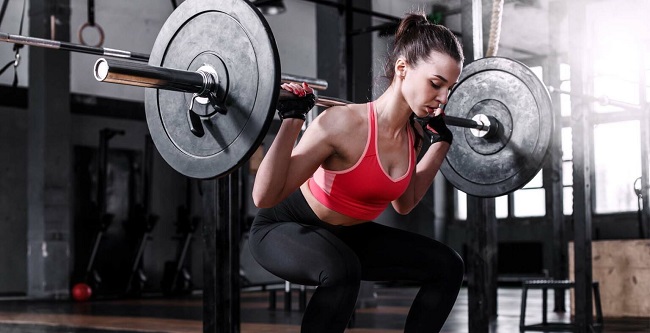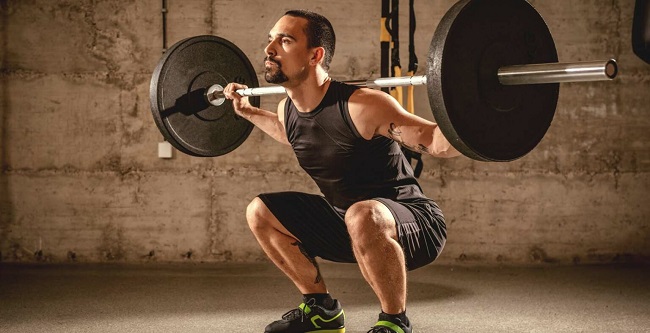The amount of weight that is suitable for each individual to squat depends on factors. Squats are important, for strengthening the body and core muscles while also imitating movements we make in our lives. As beginners see their weights increase it becomes an experience. With this enthusiasm many people wonder how weight they should squat and how to do so safely.
When considering squats it is important to explore types and determine which one suits your body best. Additionally factors such as squats versus squats, biological sex and body weight should be taken into account as they all have an impact on your squatting routine. In the following discussion we will delve into the squatting weight, frequency and other important considerations to ensure an effective squatting routine.
Read More: Phen24 Review
How Much Should I Squat

What are the various types of squats?
Understanding the types of squats is crucial when determining the amount of weight to use or the number of repetitions to perform. Lets take a look at two examples of squats.
The first example involves bodyweight squats. These squats rely on your bodys resistance against gravity without any additional load. As a result you can usually do a number of bodyweight squats in a day compared to using a barbell, on your back.
On the side the second example highlights barbell squats, which are widely used in competitive powerlifting to assess squatting ability. When considering how weight to lift during squats it is often these types of squats that come to mind. However it’s important to note that the center of gravity shifts and different muscle groups are activated in variations, like the squat. Consequently your front squat weight might be significantly lower than your weight. Additionally if you prioritize quadriceps strength as an Olympic weightlifter your front squat performance may surpass your squat.
Various variations of squats, such as safety bar squats, heavy goblet squats and Bulgarian split squats also impact your capacity to handle weight and target muscle groups. It’s crucial to understand that the weight you can lift in one variation may not directly translate to another. Therefore our main focus will be on squats and front squats.
Related: Instant Knockout Review
Why is it important to maintain form while performing squats?
Maintaining form is essential when doing squats as it greatly influences their effectiveness and safety. It’s crucial to recognize the difference, between the weight you should be able to lift based on your bodyweight and the recommended weight based on form during squats.
To perform loaded squats safely and effectively it is crucial to maintain form. Even a slight deviation, in movement or neglecting your range of motion can lead to injuries or long term issues with mobility.
To ensure squatting it is essential to adhere to established standards. Focus on achieving form at your weight before increasing the load.
How weight should you be able to squat?

The ability to squat varies based on two factors; sex and body weight. These factors determine the standards for squatting based on your level of experience which can be categorized as beginner, novice, intermediate, advanced or elite. To assess where you stand consider your body weight and one rep max—the weight you can lift for a repetition.
Back squat standards differ between female lifters. Typically strength coaches aim for lifters to be capable of squatting 1.5 2 times their body weight—placing them in the to level. For instance a male lifter weighing 150lbs should ideally be able to back squat between 239 313 lbs as their one rep max.
However it’s important to note that female lifters have standards due to differences, in muscular strength compared to males. Research has indicated that when directly compared females generally exhibit 37 68% strength, than males. It’s important to acknowledge that these statistics specifically relate to the composition of muscle fibers and do not take into account the strength displayed by female weightlifters who excel in their chosen sport.
While the standards for squats do take into consideration these variations they fail to recognize that women often possess bodies compared to men. As a result female weightlifters in the category would need to lift 1 1.25% of their body weight for a one rep maximum lift, which roughly translates to 115 168 lbs for individuals weighing 150 lbs. The progression from intermediate to levels tends to be faster for weightlifters.
When it comes to squats the considerations are different. Front squats generally involve weights compared to barbell squats due to factors such as depth and center of gravity. The shift in center of gravity during a squat allows lifters to achieve depth while performing the exercise. However this increased depth requires power when rising from the point of the squat.
Barbell squats engage muscle groups throughout the body and are regarded as compound movements. In a squat the core muscles play a role, in pushing against the bar on the upper back and maintaining an upright position. When comparing the two the front squat requires the engagement of core and back muscles to bring the bar into position and prevent any tipping. On the hand a back squat usually relies on the bodys stronger muscles.
For a male lifter a front squat typically involves lifting 1.25 times their body weight. Similarly an intermediate female lifter can usually manage to front squat their body weight. These standards assume that the lifter has specifically trained for the intricacies of performing a squat.
Related: Trimtone Review
How frequently should I incorporate squats into my routine?
The frequency of incorporating squats, into your routine depends on factors such as goals, training style and the specific types of squats being performed. For example individuals preparing for powerlifting competitions may engage in heavy barbell squats twice a week alternating between weights with reps and higher weights with lower reps. On the hand bodybuilders aiming to increase muscle mass may include squats, with weights and higher reps multiple times throughout their weekly workouts. Additionally both groups can benefit from incorporating variations of squats using weights and cable machines to enhance their training.
To make strength gains in your squatting ability it is crucial to monitor your volume of squats and progressively increase either the number of repetitions or amount of weight lifted over time. It is also beneficial to include deload weeks at intervals to provide your body with recovery time.
Read More: PhenQ Reviews
Conclusion
When determining how weight to use for squats based on your body weight it is important to take into account factors. Your training style, flexibility and technique all play a role, in your success. It’s crucial to perform squats to avoid strain or injury since they put a lot of stress on your body. Before making a decision carefully consider the pros and cons of squats and front squats as mentioned earlier. Set a goal, for the amount of weight you want to squat and create a program to achieve it.





















Add comment